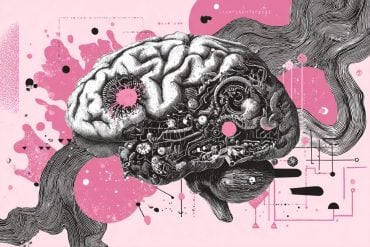Summary: A new study has identified seven blood metabolites linked to excessive daytime sleepiness (EDS), a condition affecting one in three Americans. The findings show that both diet and hormones play a role, with omega-3 and omega-6 fatty acids associated with lower risk, and compounds like tyramine linked to higher risk.
Hormonal metabolites, including those tied to melatonin regulation, also contributed to sleepiness. Researchers suggest that dietary changes, supplements, or medications could provide new treatment options for EDS.
Key Facts
- Seven Metabolites Identified: Diet- and hormone-related molecules were linked to EDS risk.
- Protective Role: Omega-3 and omega-6 fatty acids were associated with reduced daytime sleepiness.
- Higher Risk: Tyramine and certain hormonal metabolites increased EDS, especially in men.
Source: Mass General
Approximately one in three Americans reports experiencing overwhelming drowsiness during the day—a condition known as excessive daytime sleepiness (EDS). EDS is linked to an increased risk of serious conditions such as cardiovascular disease, obesity, and diabetes.
A new study led by investigators from Mass General Brigham and Beth Israel Deaconess Medical Center identifies several molecules in the blood, known as metabolites, that are linked to EDS.
Findings suggest that risk of the condition may be influenced by both internal body processes, such as hormone levels, and external factors such as diet.
Results are published in Lancet eBioMedicine.
“Our study suggests diet and genetics may play an important role in EDS,” said lead author Tariq Faquih, PhD, a postdoctoral fellow in the Division of Sleep and Circadian Disorders at Brigham and Women’s Hospital, a founding member of the Mass General Brigham healthcare system.
“As we learn what’s happening biologically, we are beginning to understand how and why EDS occurs, the early signs that someone might have it, and what we can do to help patients.”
Researchers collected data on 877 metabolites, naturally occurring molecules in the body influenced by diet and hormones. The team used blood samples from 6,000 participants in the Hispanic Community Health Study/Study of Latinos.
The team also used data from a questionnaire that assesses how often a person dozes off during the day in various scenarios. The team replicated the findings in The Multi-Ethnic Study of Atherosclerosis (MESA) study and studies in the UK and Finland.
They identified seven metabolites associated with EDS. An additional three metabolites were identified that varied by sex. The team found that omega-3 and omega-6 fatty acids, which are commonly found in foods that make up Mediterranean-like diets, were associated with lower risk of EDS.
Other metabolites, such as tyramine, which is found in fermented and overripe foods, were associated with increased daytime sleepiness, particularly in men. Sex steroid metabolites, such as progesterone, were associated with sleep-related processes such as melatonin production.
Researchers note that the results suggest potential treatment targets for EDS and that dietary changes or medications may lead to better treatment. They also note some limitations to the study, including difficulty in interpreting exact values of metabolites and using a sleep questionnaire instead of bringing participants into a sleep lab for tests.
Future directions could include conducting a clinical trial to see if dietary changes or supplements can help reduce daytime sleepiness. Additionally, the authors identified some unknown metabolites that they plan to explore further.
“Conducting a clinical trial would be a big next step and could help us understand if omega-3s and omega-6s obtained from diet could help lower risk of EDS,” said Faquih.
Authorship: In addition to Faquih, MGB authors include Kaitlin S. Potts, Pavithra Nagarajan, Hanna M. Ollila, Tianyi Huang, Clary B. Clish, Susan Redline, Tamar Sofer, and Heming Wang.
Disclosures: Redline discloses consulting relationships with Eli Lilly Inc., Jazz Pharma, and Apnimed Inc. Additionally, Redline serves as an unpaid board member for the Alliance for Sleep Apnoea Partners and has received loaned equipment for a multi-site study: oxygen concentrators from Philips Respironics and polysomnography equipment from Nox Medical.
Funding: This study was funded by the National Institutes of Health (R01HL153814, R01HL161012 and 7R01HL161012) and the JLH Foundation.
About this metabolism and sleep research news
Author: Cassandra Falone
Source: Mass General
Contact: Cassandra Falone – Mass General
Image: The image is credited to Neuroscience News
Original Research: Open access.
“Steroid Hormone Biosynthesis and Dietary Related Metabolites Associated with Excessive Daytime Sleepiness” by Tariq Faquih et al. eBioMedicine
Abstract
Steroid Hormone Biosynthesis and Dietary Related Metabolites Associated with Excessive Daytime Sleepiness
Background
Excessive daytime sleepiness (EDS) is a complex sleep problem that affects approximately 33% of the United States population. Although EDS usually occurs in conjunction with insufficient sleep and other sleep and circadian disorders, recent studies have shown unique genetic markers and metabolic pathways underlying EDS. Here, we aimed to further elucidate the biological profile of EDS using large-scale single- and pathway-level metabolomics analyses.
Methods
Metabolomics data were available for 877 metabolites in 6071 individuals from the Hispanic Community Health Study/Study of Latinos (HCHS/SOL). EDS was assessed using the Epworth Sleepiness Scale (ESS) questionnaire. We performed linear regression for each metabolite on the continuous ESS score, adjusting for demographic, lifestyle, and physiological confounders, and in sex specific groups.
Subsequently, gaussian graphical modelling was performed coupled with pathway and enrichment analyses to generate a holistic interactive network of the metabolomic profile of EDS associations.
Findings
We identified seven metabolites belonging to steroids, sphingomyelin, and long-chain fatty acids sub-pathways in the primary model associated with EDS, and an additional three metabolites in the male-specific analysis.
Interpretation
Our findings indicate that an EDS metabolomic profile is characterised by endogenous and dietary metabolites within the steroid hormone biosynthesis pathway, with some pathways that differ by sex. These pathways may be useful for understanding the causes or consequences of EDS and related sleep disorders.
Funding
Details regarding funding supporting this work and all studies involved are provided in the acknowledgements section.








